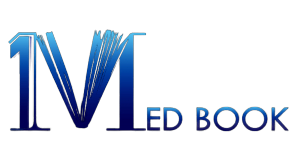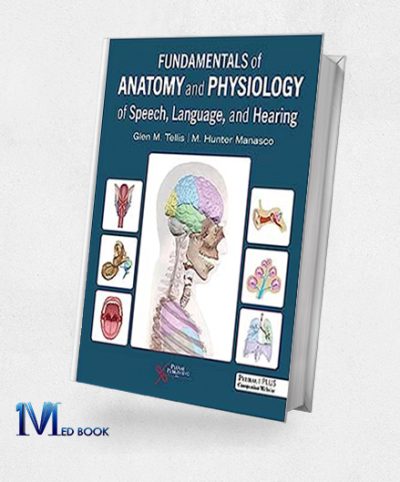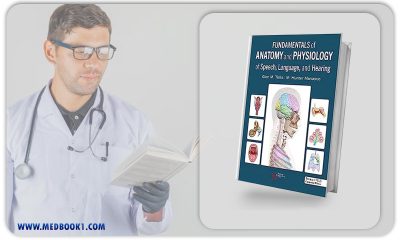Simulation-Based Learning in Communication Sciences and Disorders Moving from Theory to Practice (Original PDF from Publisher)
Simulation-Based Learning in Communication Sciences and Disorders Moving from Theory to Practice (Original PDF from Publisher)
| Edition |
1 |
|---|---|
| File Size |
11.1 MB |
| Format |
Publisher PDF |
| Language |
English |
| Publisher |
Slack Incorporated |
| ISBN-10 |
978-1638220008 |
| ISBN-13 |
9781638220022 |
$109.95 Original price was: $109.95.$27.00Current price is: $27.00.
- The files will be sent to you via E-mail
- Once you placed your order, we will make sure that you receive the files as soon as possible
5/5
Description
Simulation Based Learning in Communication Sciences and Disorders Moving from Theory to Practice (Original PDF from Publisher)
1.1.Description
“Simulation Based Learning in Communication Sciences and Disorders: Moving From Theory to Practice” is an invaluable resource catering to academic and clinical educators involved in audiology, speech-language pathology, and communication sciences and disorders.
This comprehensive text, authored by experienced clinical educators, serves as an introductory to intermediate guide for implementing clinical simulations in undergraduate and graduate training programs, as well as in the workplace.
Divided into three main sections, the book covers foundational theories in simulation-based learning, principles of teaching and learning in higher education, various forms of simulation technology, best practices for implementation, and ways to incorporate simulation technologies into the curriculum.
Additionally, it emphasizes professional development, research, and adaptation to changes in education and training.
As one of the pioneering works in the field, this book integrates best practices in simulation research and practice, offering essential insights for those dedicated to delivering high-quality learning experiences in communication sciences and disorders.

Simulation Based Learning in Communication Sciences and Disorders
1.2.Key Features
“Simulation Based Learning in Communication Sciences and Disorders: Moving From Theory to Practice” is a comprehensive guide designed for academic and clinical educators in audiology, speech-language pathology, and communication sciences and disorders. The key features of the book include:
- Foundational Theories: The book provides an overview of foundational theories in simulation-based learning and explores principles of teaching and learning in higher education.
- Clinical Simulation Learning Experiences: It delves into various forms of simulation technology, outlines best practices for implementing simulations for learning, and offers examples for educators to incorporate simulation technologies into their curriculum.
- Professional Issues and Advocacy: “Simulation Based Learning in Communication Sciences and Disorders: Moving From Theory to Practice” emphasizes the importance of professional development and research in the area of simulations. It encourages readers to consider how emerging technologies can adapt to changes in education and training.
- Integration of Best Practices: This book is one of the first to integrate best practices in simulation research and practice, specifically tailored for academics and clinical educators in communication sciences and disorders.
- Practical Guidance: The content provides practical guidance for implementing simulations at various levels of fidelity, making it suitable for both introductory and intermediate levels of expertise.
- Adaptation to Changes: “Simulation Based Learning in Communication Sciences and Disorders: Moving From Theory to Practice” Recognizing the evolving landscape of education, the book addresses how existing and emerging technologies can be harnessed to adapt to upcoming changes in the field.
In summary, “Simulation Based Learning in Communication Sciences and Disorders: Moving From Theory to Practice” serves as a valuable guide for anyone involved in providing high-quality learning experiences through simulation to students and professionals in communication sciences and disorders.

Simulation Based Learning in Communication Sciences and Disorders
1.3. About Writer
Dr. Carol C. Dudding is a distinguished professional holding a Ph.D. and CHSE (Certified Healthcare Simulation Educator) designation. With a notable career in healthcare education, she has contributed significantly to the advancement of simulation-based learning. Dr. Dudding’s expertise extends to various aspects of clinical simulation, making her a respected authority in the field.
Dr. Sarah M. Ginsberg is an accomplished educator with an Ed.D. and CCC-SLP (Certificate of Clinical Competence in Speech-Language Pathology). As an ASHA Fellow (Fellow of the American Speech-Language-Hearing Association), she has demonstrated excellence and leadership in speech-language pathology. Dr. Ginsberg’s contributions to the field include valuable insights into communication sciences and disorders, particularly in the context of simulation-based learning.
Together, Dr. Dudding and Dr. Ginsberg bring a wealth of knowledge to the realm of simulation-based learning in communication sciences and disorders, making their collaborative work a valuable resource for educators and professionals in the field.

Simulation Based Learning in Communication Sciences and Disorders
Summary
“Simulation Based Learning in Communication Sciences and Disorders: Moving From Theory to Practice” is an essential resource for academic and clinical educators in audiology, speech-language pathology, and communication sciences and disorders.
Written by experienced clinical educators, the book presents best practices in simulations for undergraduate, graduate, and workplace training programs.
Divided into three main sections, the text covers foundational theories in simulation-based learning, outlines various forms of simulation technology, and explores professional issues and advocacy.
“Simulation Based Learning in Communication Sciences and Disorders: Moving From Theory to Practice” offers insights into implementing clinical simulations, ranging from low to high fidelity, providing practical examples for educators to incorporate simulation technologies effectively into their curriculum.
With a focus on adapting to changes in education and training, this book is a valuable guide for those interested in delivering high-quality learning experiences through simulation to students and professionals in communication sciences and disorders.
other products
Reviews (0)
Be the first to review “Simulation-Based Learning in Communication Sciences and Disorders Moving from Theory to Practice (Original PDF from Publisher)” Cancel reply
Related products
Fundamentals of Anatomy and Physiology of Speech, Language, and Hearing (Original PDF from Publisher)
Rated 0 out of 5





Reviews
There are no reviews yet.